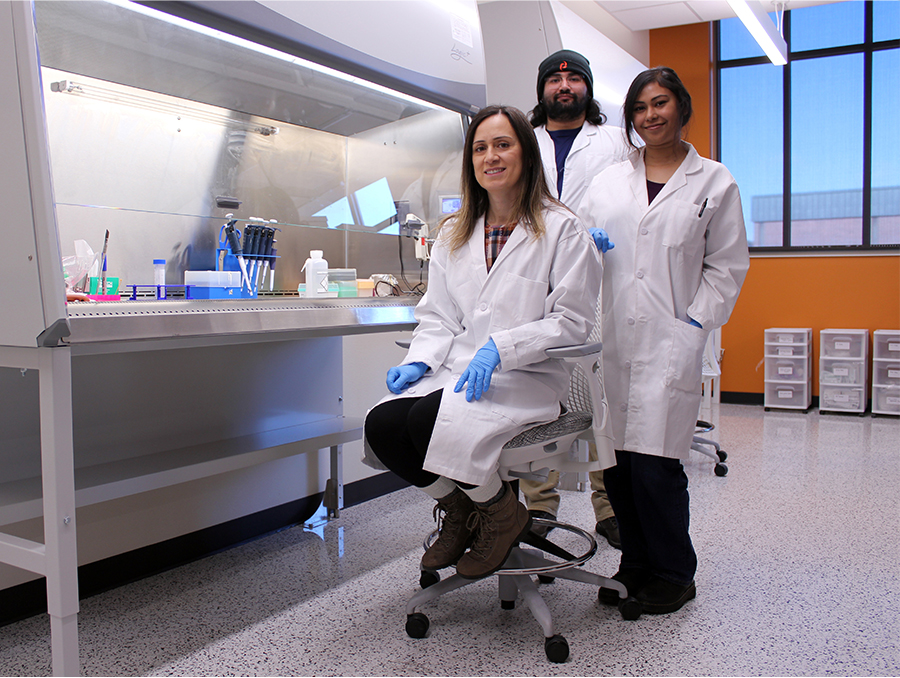Research that could help alleviate musculoskeletal disorders in military pilots is underway in the lab of Electrical & Biomedical Engineering Assistant Professor Josette El Zaklit.
El Zaklit, whose research interests include nanobioelectricity — a rapidly expanding interdisciplinary field that combines nanoelectrical stimulation with biology of excitable tissues and organs — has received a three-year, $457,979 grant from the Air Force Office of Scientific Research (AFOSR). Thomas Gould, an associate professor in physiology and cell biology at UNR Med, is a co-principal investigator in the research.
Their work involves the study of a new type of electrical stimulation, nanosecond duration electric pulses (NEP), that could help pilots avoid soft-tissue injuries caused by sudden or sustained exposure to repetitive motion, force, vibration and awkward positions. Such musculoskeletal issues, El Zaklit explained in her grant proposal, are a significant problem affecting pilot performance.
The use of electrical stimulation to support and improve muscle is not new, but the conventional treatment delivers electric pulses in milliseconds. El Zaklit and Gould are studying nanosecond-duration electric pulses (a millisecond is one-thousandth of a second; a nanosecond is one-billionth of a second). In earlier research, El Zaklit found that NEP was as effective as conventional electric pulses but without the muscle fatigue of the conventional treatment.
El Zaklit and Gould plan to build on those findings by establishing a range of NEP parameters (such as duration and frequency) that will stimulate the diaphragm muscle, then test the electrical stimulation on mice. This work eventually could help develop practical applications of NEP for enhancing skeletal muscle force in military pilots.















